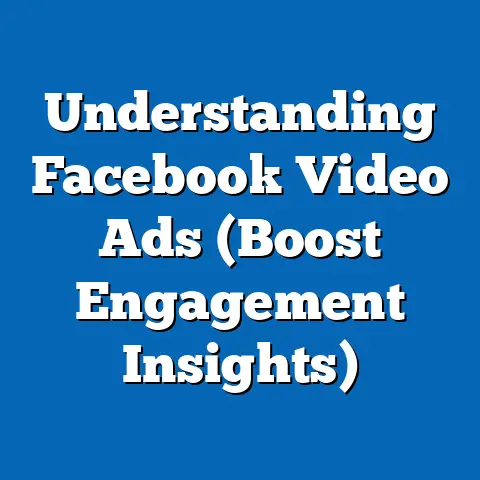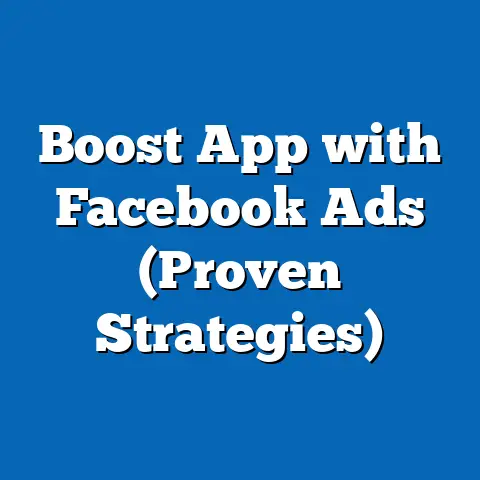Unlock Top Cyfe Metrics for Facebook Ads (Expert Insights)
In the world of Facebook advertising, where data is abundant, the real challenge isn’t finding insights; it’s deciphering which metrics truly matter. Just as a painter is overwhelmed by a vibrant palette, marketers often drown in a sea of statistics, unsure of which brush strokes will complete their masterpiece. I’ve been there, staring at endless spreadsheets, feeling lost in the noise. But over the years, I’ve learned to focus on the signals that truly drive success. And that’s what I want to share with you today – how to use Cyfe to cut through the noise and unlock the metrics that will transform your Facebook ad campaigns.
Introduction
Facebook advertising remains a cornerstone of digital marketing, offering unparalleled reach and targeting capabilities. However, these capabilities come with a deluge of data. Sifting through this information to identify key performance indicators (KPIs) is essential for optimizing ad performance. It’s not enough to simply launch a campaign and hope for the best; you need to constantly monitor, analyze, and adjust your strategy based on real-time feedback.
That’s where Cyfe comes in. Cyfe is a business dashboard application that allows you to monitor and analyze data from various sources, including Facebook Ads. It provides a centralized, customizable view of your most important metrics, helping you make data-driven decisions and improve your advertising ROI. I remember when I first discovered Cyfe; it was a game-changer. Before, I was juggling multiple tabs and spreadsheets, trying to piece together a coherent picture of my campaign performance. Cyfe brought everything together in one place, saving me time and, more importantly, helping me make better decisions.
In this article, I’ll guide you through the top Cyfe metrics to monitor for your Facebook ads, explaining why they matter and how to use them to achieve your campaign goals. We’ll delve into expert strategies for leveraging these metrics to enhance your ad campaigns and ultimately drive better results.
Understanding Cyfe Metrics
Cyfe is more than just a dashboard; it’s a command center for your marketing data. It’s a web-based application that allows you to connect various data sources, including Facebook Ads, Google Analytics, and other marketing platforms, and visualize your key metrics in a single, customizable dashboard. Think of it as your mission control, providing a real-time overview of your campaign performance.
Why Metrics Matter in Facebook Advertising
Metrics are the lifeblood of effective Facebook advertising. They provide the insights you need to understand what’s working, what’s not, and where you can improve. Without metrics, you’re flying blind, relying on guesswork and intuition. With metrics, you can make informed decisions based on data, optimizing your campaigns for maximum impact.
Specifically, metrics influence strategy and budget allocation in several key ways:
- Identifying High-Performing Ads: Metrics like CTR and Conversion Rate help you identify which ads are resonating with your target audience. You can then allocate more budget to these ads and scale your successful strategies.
- Optimizing Targeting: Metrics like Audience Insights and demographics data within Cyfe can reveal which audience segments are most responsive to your ads. You can then refine your targeting to focus on these high-value segments.
- Improving Ad Creative: Metrics like Engagement Rate and Relevance Score provide feedback on the quality and relevance of your ad creative. You can use this feedback to improve your ad copy, images, and videos.
- Managing Budget: Metrics like CPC and CPA help you understand the cost-effectiveness of your campaigns. You can then adjust your bids and budget allocation to maximize your ROI.
Key Metrics Tracked by Cyfe
Cyfe tracks a wide range of Facebook ad metrics, but some are more important than others. Here’s a brief overview of some of the key metrics you should be monitoring:
- Impressions: The number of times your ad was displayed.
- Reach: The number of unique people who saw your ad.
- Click-Through Rate (CTR): The percentage of people who saw your ad and clicked on it.
- Conversion Rate: The percentage of people who clicked on your ad and completed a desired action, such as making a purchase or filling out a form.
- Cost Per Click (CPC): The average cost you paid for each click on your ad.
- Cost Per Acquisition (CPA): The average cost you paid for each conversion.
- Return on Ad Spend (ROAS): The revenue you generated for every dollar you spent on advertising.
Takeaway: Understanding the core metrics tracked by Cyfe is fundamental to leveraging the tool effectively. These metrics are the building blocks for data-driven decision-making in your Facebook ad campaigns.
Top Cyfe Metrics to Monitor for Facebook Ads
Now that we’ve covered the basics, let’s dive into the specific Cyfe metrics that are crucial for Facebook ad success. I’ve found that focusing on these metrics consistently leads to better campaign performance and a higher ROI.
1. Impressions: Visibility is Key
Definition: Impressions represent the total number of times your ad was displayed on Facebook. It’s a fundamental metric that reflects the visibility of your ad.
Why It Matters: Impressions are the starting point of your advertising funnel. You can’t get clicks or conversions if people aren’t seeing your ad. Monitoring impressions helps you understand the reach of your campaign and identify potential issues with your targeting or bidding strategy.
How to Interpret It: A low number of impressions could indicate that your audience is too narrow, your bid is too low, or your ad is being disapproved. A high number of impressions, on the other hand, suggests that your ad is reaching a wide audience, but it doesn’t necessarily mean that it’s effective. You need to consider other metrics, like CTR, to assess the quality of your impressions.
Relationship to Other Metrics: Impressions directly influence Reach, CTR, and ultimately, Conversions. A high number of impressions combined with a low CTR suggests that your ad creative or targeting needs improvement.
2. Click-Through Rate (CTR): Measuring Engagement
Definition: Click-Through Rate (CTR) is the percentage of people who saw your ad and clicked on it. It’s calculated by dividing the number of clicks by the number of impressions.
Why It Matters: CTR is a key indicator of ad engagement. It reflects how well your ad resonates with your target audience. A high CTR suggests that your ad is relevant, compelling, and effectively communicates your message.
How to Interpret It: A good CTR varies depending on your industry, target audience, and ad format. However, as a general benchmark, a CTR of 1% or higher is considered good. A CTR below 0.5% suggests that your ad needs significant improvement.
Relationship to Other Metrics: CTR is closely related to Quality Score, Relevance Score, and Conversion Rate. A high CTR can improve your Quality Score and Relevance Score, which can lower your CPC and improve your ad delivery. A high CTR combined with a low Conversion Rate suggests that your landing page or offer needs optimization.
3. Conversion Rate: Driving Action
Definition: Conversion Rate is the percentage of people who clicked on your ad and completed a desired action, such as making a purchase, filling out a form, or signing up for a newsletter.
Why It Matters: Conversion Rate is the ultimate measure of your advertising success. It reflects how effectively your ad is driving the desired outcome. A high Conversion Rate means that your ad is not only attracting the right people but also persuading them to take action.
How to Interpret It: A good Conversion Rate varies depending on your industry, offer, and target audience. However, as a general benchmark, a Conversion Rate of 2% or higher is considered good. A Conversion Rate below 1% suggests that your landing page, offer, or targeting needs improvement.
Relationship to Other Metrics: Conversion Rate is directly related to Revenue and ROI. A high Conversion Rate translates into more revenue and a higher ROI. To improve your Conversion Rate, you need to optimize your landing page, offer, and targeting.
4. Cost Per Click (CPC) and Cost Per Acquisition (CPA): Managing Your Budget
Definition: Cost Per Click (CPC) is the average cost you paid for each click on your ad. Cost Per Acquisition (CPA) is the average cost you paid for each conversion.
Why They Matter: CPC and CPA are crucial for budget management. They help you understand the cost-effectiveness of your campaigns and optimize your bidding strategy.
How to Interpret Them: A low CPC and CPA are generally desirable, but they should be balanced against other metrics like Conversion Rate and Revenue. A very low CPC might indicate that you’re targeting a very broad audience or using low-quality ad creative. A high CPA might indicate that your landing page or offer needs improvement.
Relationship to Other Metrics: CPC and CPA are directly related to Budget and ROI. To lower your CPC and CPA, you need to improve your Quality Score, Relevance Score, and Conversion Rate.
5. Lifetime Value (LTV): Thinking Long-Term
Definition: Lifetime Value (LTV) is the predicted revenue that a customer will generate for your business over the course of their relationship with you.
Why It Matters: Understanding LTV allows you to make more informed decisions about your advertising budget. If you know that a customer is worth $500 to your business, you can afford to spend more to acquire them.
How to Interpret It: LTV varies depending on your industry, business model, and customer retention rate. To calculate LTV, you need to estimate the average customer lifespan and the average revenue generated per customer per year.
Relationship to Other Metrics: LTV informs your CPA target. You should aim to acquire customers at a CPA that is lower than their LTV. By understanding LTV, you can optimize your advertising budget for long-term profitability.
Expert Insight: “Don’t just focus on short-term gains. Understanding the lifetime value of your customers allows you to make more strategic decisions about your advertising spend and build long-term relationships.” – Neil Patel, Digital Marketing Expert.
Takeaway: Monitoring these top Cyfe metrics is crucial for optimizing your Facebook ad campaigns. By understanding what these metrics mean and how they relate to each other, you can make data-driven decisions that drive better results.
Expert Strategies for Utilizing Cyfe Metrics
Now that you know which metrics to monitor, let’s explore some expert strategies for leveraging Cyfe metrics to enhance your Facebook ad campaigns. These strategies are based on my own experience and the best practices of successful Facebook advertisers.
1. Setting Up Custom Dashboards: Focus on What Matters
Cyfe allows you to create custom dashboards tailored to your specific campaign goals. This is a powerful feature that allows you to focus on the metrics that matter most to you.
How to Do It:
- Identify Your Goals: Start by defining your campaign goals. Are you trying to generate leads, drive sales, or increase brand awareness?
- Select Relevant Metrics: Choose the metrics that are most relevant to your goals. For example, if you’re trying to generate leads, you might focus on metrics like Lead Generation Cost, Conversion Rate, and Form Completion Rate.
- Create a Custom Dashboard: In Cyfe, create a new dashboard and add widgets for the metrics you selected.
- Customize Your View: Arrange the widgets in a way that makes sense to you and customize the date ranges and filters to focus on the data that is most relevant.
Example: If you’re running a campaign to promote a new product, you might create a dashboard that includes widgets for Impressions, Reach, CTR, Conversion Rate, Revenue, and ROAS.
Benefit: Custom dashboards save you time and help you focus on the metrics that are most important to your success.
2. A/B Testing Ads: Data-Driven Optimization
A/B testing is a powerful technique for optimizing your ad creative and targeting. It involves creating multiple versions of your ad and testing them against each other to see which performs best.
How to Do It:
- Identify Elements to Test: Choose elements of your ad to test, such as the headline, image, or call-to-action.
- Create Variations: Create multiple versions of your ad with different variations of the elements you’re testing.
- Run Your Test: Run your ads and track their performance using Cyfe metrics like CTR and Conversion Rate.
- Analyze Results: Analyze the results of your test and identify the winning variation.
- Implement the Winner: Implement the winning variation in your campaign and continue to test other elements.
Example: You might test two different headlines for your ad to see which generates a higher CTR. Or you might test two different images to see which drives more conversions.
Benefit: A/B testing allows you to make data-driven decisions about your ad creative and targeting, leading to improved campaign performance.
3. Analyzing Trends Over Time: Identifying Patterns
Cyfe allows you to track metrics over time, which is essential for identifying trends and patterns. This can help you understand how your campaigns are performing over the long term and identify areas for improvement.
How to Do It:
- Set Up Long-Term Tracking: In Cyfe, set up widgets to track your key metrics over time.
- Monitor Trends: Regularly monitor the trends in your metrics to identify patterns.
- Analyze Causes: Analyze the causes of any significant trends or changes in your metrics.
- Adjust Your Strategy: Adjust your strategy based on your analysis.
Example: You might notice that your CTR is declining over time. This could indicate that your ad creative is becoming stale or that your target audience is becoming fatigued. To address this, you might need to refresh your ad creative or refine your targeting.
Benefit: Analyzing trends over time allows you to proactively identify and address potential issues, ensuring that your campaigns continue to perform well.
4. Integrating Other Data Sources: Holistic Insights
Cyfe allows you to integrate data from various sources, including Facebook Ads, Google Analytics, and other marketing platforms. This allows you to get a holistic view of your campaign performance and identify correlations between different data sources.
How to Do It:
- Connect Your Data Sources: In Cyfe, connect your Facebook Ads account, Google Analytics account, and other relevant data sources.
- Create Combined Dashboards: Create dashboards that combine data from multiple sources.
- Analyze Correlations: Analyze the correlations between different data sources to identify insights.
Example: You might combine data from Facebook Ads and Google Analytics to see how your Facebook ad campaigns are driving traffic to your website and generating conversions. Or you might combine data from Facebook Ads and your CRM to see how your Facebook ad campaigns are contributing to your overall sales pipeline.
Benefit: Integrating other data sources provides a more comprehensive view of your campaign performance and allows you to identify insights that you might otherwise miss.
Case Study: I once worked with a client who was struggling to improve their Facebook ad ROI. By integrating data from Facebook Ads and their CRM, we discovered that their Facebook ad campaigns were generating a high volume of leads, but the leads were not converting into sales. After further investigation, we realized that the leads were not qualified and were not a good fit for their product. We then refined their targeting to focus on a more qualified audience, which led to a significant improvement in their sales conversion rate and overall ROI.
Takeaway: Leveraging these expert strategies can significantly enhance your Facebook ad campaigns. By setting up custom dashboards, A/B testing ads, analyzing trends over time, and integrating other data sources, you can make data-driven decisions that drive better results.
Conclusion
In the dynamic world of Facebook advertising, staying ahead requires more than just intuition; it demands a data-driven approach. Understanding and effectively utilizing Cyfe metrics is essential for optimizing your campaigns and achieving your business goals.
While the sheer volume of data can be overwhelming, focusing on the right metrics and using tools like Cyfe can help you cut through the noise and make informed decisions. By monitoring metrics like Impressions, CTR, Conversion Rate, CPC, CPA, and LTV, you can gain valuable insights into your campaign performance and identify areas for improvement.
Remember, data is just a tool. It’s up to you to use it wisely. By leveraging the expert strategies discussed in this article, you can transform your Facebook ad campaigns and drive better results.
Now it’s your turn. Explore Cyfe, set up your custom dashboards, and start optimizing your Facebook ads using the insights you’ve gained from this article. The possibilities are endless, and the potential rewards are significant. Go forth and conquer the world of Facebook advertising!





